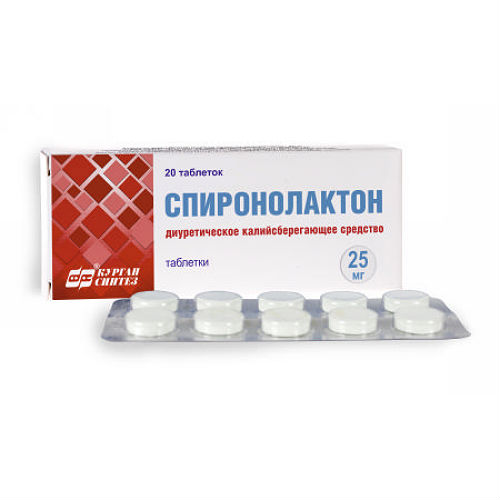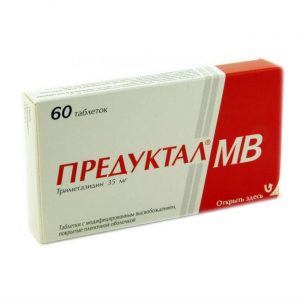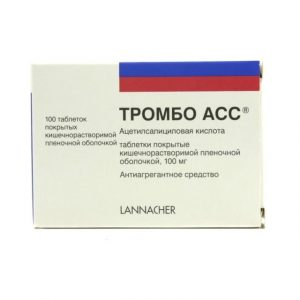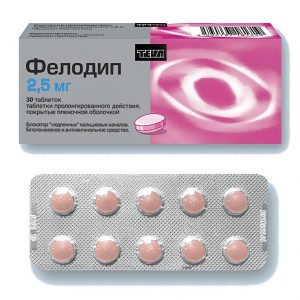Description
packaging 20 pcs
Pharmacological action
Spironolactone is a potassium-sparing diuretic, a specific antagonist of prolonged action aldosterone (mineralocorticosteroid hormone of the adrenal cortex). In the distal parts of the nephron, spironolactone prevents the retention of sodium and water by aldosterone and suppresses the potassium-eliminating effect of aldosterone, reduces the synthesis of permeases in the aldosterone-dependent portion of the collecting tubules and distal tubules. By binding to aldosterone receptors, it increases the excretion of sodium, chlorine and water ions in the urine, reduces the excretion of potassium and urea ions, and reduces the acidity of urine.
Increased diuresis due to the presence of a diuretic effect, which is unstable.
The diuretic effect is manifested on 2-5 days of treatment.
Pharmacokinetics:
Absorption and distribution:
When taken orally, it is rapidly and completely absorbed from the gastrointestinal tract (GIT). It binds to plasma proteins by approximately 98% (canrenone – 90%). The maximum concentration (Cmax) of canrenone is achieved 2-4 hours after administration. After daily intake of 100 mg of spironolactone for 15 days, Cmax reaches 80 ng / ml, the time to reach Cmax after the next morning intake is 2-6 hours.
Distribution volume – 0.05 l / kg. Spironolactone penetrates poorly into organs and tissues, while he and his metabolites penetrate through the placental barrier, and canrenone – into breast milk.
Metabolism:
Spironolactone is converted into active metabolites: a metabolite containing sulfur (80%) and partially canrenone.
Excretion:
Excreted by the kidneys (50% – as metabolites, 10% – unchanged) and partially through the intestines. The half-life (T1 / 2) of spironolactone is 13-24 hours, of active metabolites – up to 15 hours. The elimination of canrenone (mainly by the kidneys) is two-phase, T1 / 2 in the first phase is 2-3 hours, in the second 12-96 hours
Special patient groups
With cirrhosis and chronic heart failure, the half-life increases without signs of cumulation, the probability of which is higher with chronic renal failure and hyperkalemia.
Indications
Essential hypertension (as part of combination therapy).
Edema syndrome in chronic heart failure (can be used in monotherapy and in combination with standard therapy).
States, in which secondary hyperaldosteronism can be detected, including cirrhosis, accompanied by ascites and / or edema, nephrotic syndrome, as well as other conditions accompanied by edema.
Hypokalemia / hypomagnesemia (as an adjuvant for its prevention during treatment with diuretics and when it is impossible to use other methods of correction of potassium content).
Primary hyperaldosteronism (Conn’s syndrome) – for a short preoperative course of treatment.
To establish a diagnosis of primary hyperaldosteronism.
Contraindications
Hypersensitivity to the drug, Addison s disease, hyperkalemia, hyponatremia, severe renal failure (creatinine clearance less than 10 ml / min), anuria, simultaneous use of eplerenone and other potassium-sparing diuretics, potassium preparations, pregnancy and the period of breastfeeding, children under 3 years of age (due to the solid dosage form), lactose intolerance, lactase deficiency, glucose-galactose malabsorption syndrome (the drug contains lactose).
Precautions:
Hypercalcemia, metabolic acidosis, atrioventricular block (hyperkalemia enhances it), diabetic nephropathy, diabetes mellitus (with confirmed or suspected renal failure), surgical interventions for local and general anesthesia, gynecomastia-taking drugs that cause liver cirrhosis menstrual irregularities old age.
Special instructions
There may be a temporary increase in serum urea nitrogen, especially with decreased kidney function and hyperkalemia. Reversible hyperchloremic acidosis is possible.
In cases of impaired renal and hepatic function, as well as in old age, regular monitoring of serum electrolytes and renal function is necessary.
The drug makes it difficult to determine digoxin, cortisol and adrenaline in the blood.
Despite the absence of a direct effect on carbohydrate metabolism, the presence of diabetes mellitus, especially with diabetic nephropathy, requires special care because of the possibility of developing hyperkalemia.
With simultaneous treatment with non-steroidal anti-inflammatory drugs, kidney function and electrolyte levels in the blood should be monitored.
Potassium-rich foods should be avoided.
Alcohol is contraindicated during treatment.
Impact on the ability to drive transp. Wed and fur.: Adverse effects of spironolactone on the ability to drive vehicles and mechanical means have not been identified. However, it is known that the drug SPYRONOLACTONE can cause dizziness and drowsiness, as a result of which during its application it is necessary to exercise caution when performing work requiring increased attention and when driving vehicles.
Composition
Composition 1 tablet:
active substance: spironolactone – 25 mg
additional components: crospovidone (Collidone CL-M), copovidone (Collidone VA-64), talc, potato starch, calcium stearate (calcium crystalline) stearose, calcium crystalline .
Dosage and Administration
Inside.
To ensure the following dosage regimens, if it is necessary to use spironolactone at a dose of 25 mg, preparations of other manufacturers should be prescribed in the form of tablets or capsules in a dosage of 25 mg.
Essential hypertension
The daily dose for adults is usually 50-100 mg once and can be increased to 200 mg, and the dose should be increased gradually, once every 2 weeks. To achieve an adequate response to therapy, the drug must be taken for at least 2 weeks. If necessary, adjust the dose.
Idiopathic hyperaldosteronism
The drug is prescribed at a dose of 100-400 mg / day.
Severe hyperaldosteronism and hypokalemia
The drug is prescribed at a dose of 300 mg / day (maximum 400 mg / day) for 2-3 doses with improvement, the dose is gradually reduced to 25 mg / day.
Hypokalemia and / or hypomagnesemia
In case of hypokalemia and / or hypomagnesemia caused by diuretic therapy, the drug is prescribed at a dose of 25-100 mg / day, once or in several doses. The maximum daily dose is 400 mg if potassium preparations for oral administration or other methods of replenishing its deficiency are ineffective.
Diagnosis and treatment of primary hyperaldosteronism
As a diagnostic tool for a short diagnostic test: 400 mg / day for 4 days, divided into several doses per day. With an increase in potassium in the blood while taking the drug and a decrease after cancellation, it can be assumed that there is primary hyperaldosteronism.
With a long diagnostic test: in the same dose for 3-4 weeks. With the achievement of correction of hypokalemia and arterial hypertension, one can assume the presence of primary hyperaldosteronism.
Short course of preoperative therapy of primary hyperaldosteronism
After the diagnosis of hyperaldosteronism is established using more accurate diagnostic methods, SPIRONOLACTON should be taken 100-400 mg / day, divided into 1-4 doses per day during the entire period of preparation for surgical intervention.
If surgery is not indicated, the drug SPIRONOLACTONE is used for long-term maintenance therapy, in this case, the lowest effective dose is applied, which is selected individually for each patient.
Edema with nephrotic syndrome
The daily dose for adults is usually 100-200 mg / day. No effect of spironolactone on the main pathological process was detected, and therefore the use of this drug is recommended only in cases where other types of therapy are ineffective.
Edematous syndrome against the background of chronic heart failure
Daily, for 5 days, 100-200 mg / day in 2-3 doses, in combination with a loop or thiazide diuretic. Depending on the effect, the daily dose is reduced to 25 mg. The maintenance dose is selected individually. The maximum dose is 200 mg / day.
Edema with cirrhosis of the liver
If in the urine the ratio of sodium and potassium ions (Na + / K +) exceeds 1.0, then the daily dose for adults is usually 100 mg. If the ratio is less than 1.0, then the daily dose for adults is usually 200-400 mg. The maintenance dose is selected individually.
Edema in children
The initial dose in children older than 3 years is 1.0-3.3 mg / kg body weight or 30-90 mg / m2 / day in 1-4 doses. After 5 days, the dose is adjusted and, if necessary, increased by 3 times compared to the original.
Use in elderly patients
It is recommended to start treatment with a minimum dose and titrate it until the maximum dose is achieved under the control of liver / kidney function.
Side effects
Violations of the blood and lymphatic system
Agranulocytosis, thrombocytopenia, megaloblastosis, eosinophilia.
Immune system disorders
Urticaria.
Violations of the endocrine system
Coarsening of the voice, violation of the menstrual cycle, dysmenorrhea, amenorrhea, metrorrhagia in the menopause, hirsutism.
Disorders of the nervous system
Ataxia, lethargy, dizziness, headache, drowsiness, lethargy, confusion, muscle spasm.
Disorders of the respiratory system, chest and mediastinal organs
Shortness of breath.
Gastrointestinal Disorders
Nausea, vomiting, diarrhea, ulceration and bleeding from the gastrointestinal tract, gastritis, intestinal colic, abdominal pain, constipation.
Disorders of the liver and biliary tract
Disorders of liver function.
Disorders of the skin and subcutaneous tissue
Hypertrichosis, pruritus, maculopapular and erythematous rash, Steven-Johnson syndrome, toxic epidermal necrolysis.
Violations of the musculoskeletal and connective tissue
Cramps of the calf muscles, osteomalacia.
Disorders of the kidneys and urinary tract
Acute renal failure.
Reproductive system and mammary gland disorders
In men, gynecomastia (the likelihood of developing depends on the dose, duration of treatment and, usually, is reversible, and disappears after drug withdrawal, and only in rare cases the mammary gland remains slightly enlarged)
In women, there is pain in the area of the mammary glands, breast carcinoma (there is no established connection with the drug).
General disorders and disorders at the injection site
Alopecia, drug fever.
Laboratory and instrumental data
Hyperuricemia, hypercreatinemia, increased urea concentration, impaired water-electrolyte balance (hyperkalemia, hyponatremia) and the acid-base state (metabolic hyperchloremic acidosis or alkalosis).
Drug interaction
Reduces the effect of anticoagulants, indirect anticoagulants (heparin, coumarin derivatives, indandion) and toxicity of cardiac glycosides (since normalization of potassium in the blood prevents the development of toxicity).
Enhances the metabolism of phenazone (antipyrine).
Reduces vascular sensitivity to norepinephrine (norepinephrine) (requires caution when conducting anesthesia), increases the half-life of digoxin – digoxin intoxication is possible.
Enhances the toxic effect of lithium due to reduced clearance.
Possibly enhances the action of non-depolarizing muscle relaxants (e.g. tubocurarine).
Accelerates the metabolism and excretion of carbenoxolone.
Carbenoxolone promotes sodium retention with spironolactone.
Glucocorticosteroid drugs and diuretics (thiazides and thiazide-like, furosemide, ethacrylic acid) enhance and accelerate the diuretic and natriuretic effects.
Enhances the action of diuretic and antihypertensive drugs.
Non-steroidal anti-inflammatory drugs reduce the diuretic and natriuretic effects, the risk of hyperkalemia increases.
Alcohol (ethanol), barbiturates, narcotic substances increase orthostatic hypotension.
Glucocorticosteroid drugs enhance the diuretic and natriuretic effects of hypoalbuminemia and / or hyponatremia.
The risk of hyperkalemia increases when taken with potassium preparations, potassium supplements and potassium-sparing diuretics, angiotensin-converting enzyme inhibitors (ACE) (acidosis), angiotensin II receptor antagonists, aldosterone blockers, indomethacin, cyclosporine.
Salicylates, indomethacin reduce the diuretic effect.
Ammonium chloride, colestyramine contribute to the development of hyperkalemic metabolic acidosis.
Fludrocortisone causes a paradoxical increase in tubular secretion of potassium.
Reduces the effect of mitotan.
Enhances the effect of triptorelin, buserelin, gonadorelin.
Overdose
Symptoms: nausea, vomiting, dizziness, diarrhea, skin rash, hyperkalemia (paraesthesia, muscle weakness, arrhythmias), hyponatremia (dryness of mucous membrane of the mouth, thirstiness, drowsiness, sleepiness).
Treatment: gastric lavage, symptomatic treatment of dehydration. In case of hyperkalemia it is necessary to normalize the water-electrolyte balance with the help of potassium excreting diuretics, rapid parenteral administration of 5-20% solution of dextrose (glucose) with insulin at the rate of 0.25-0.5 IU per 1 g of dextrose (glucose), if necessary, you can re-enter. In severe cases, hemodialysis is performed.
Storage Conditions
In a dark place at a temperature not exceeding 25 ° C.
Keep out of the reach and sight of children.
Shelf life
3 years.
Do not use after the expiration date printed on the package.
Deystvuyushtee substance
Spironolactone
Terms and conditions
By prescription
dosage form
tablets
Possible product names
Spironolactone tablets 25 mg pack 20
Synthesis , Russia




